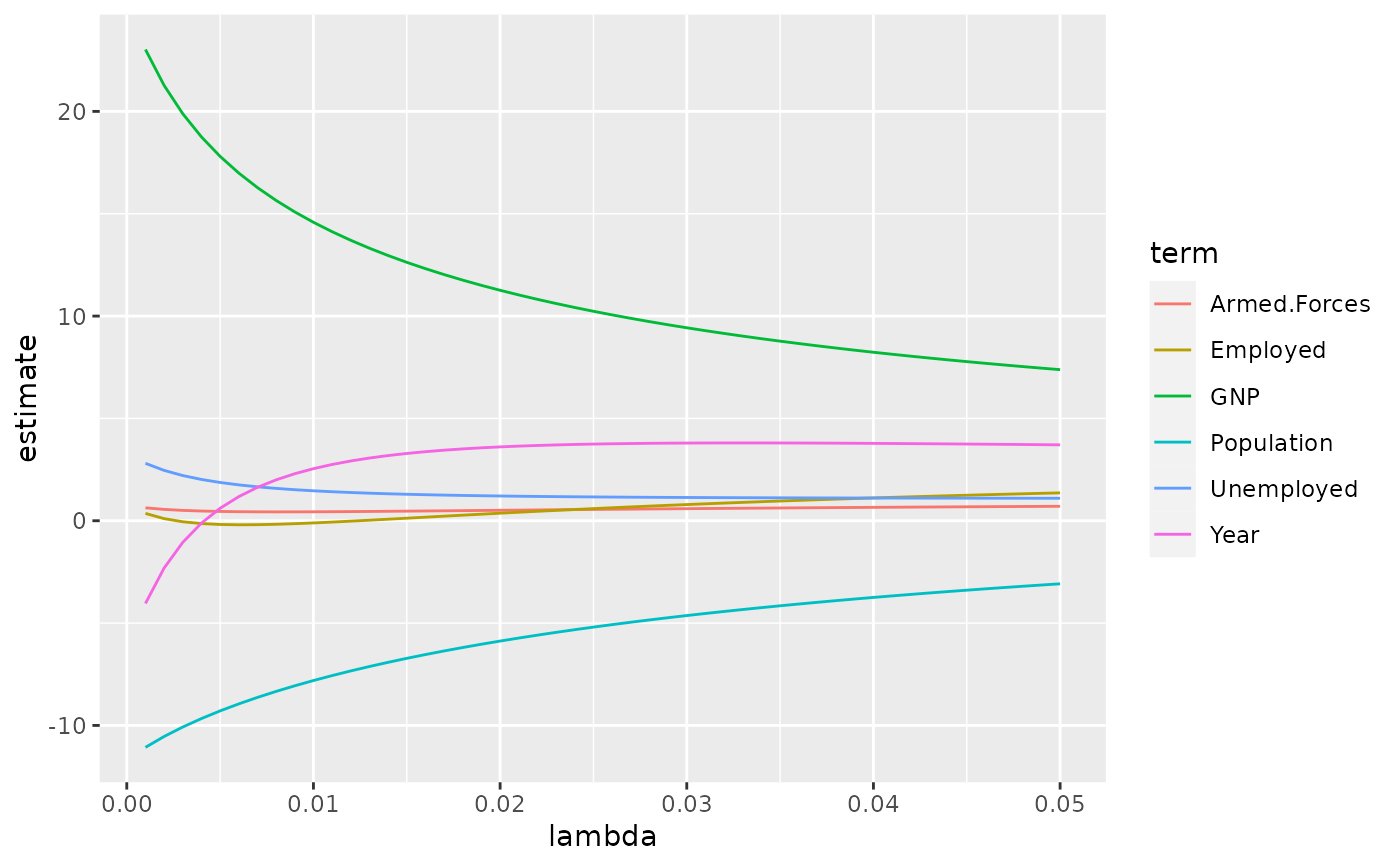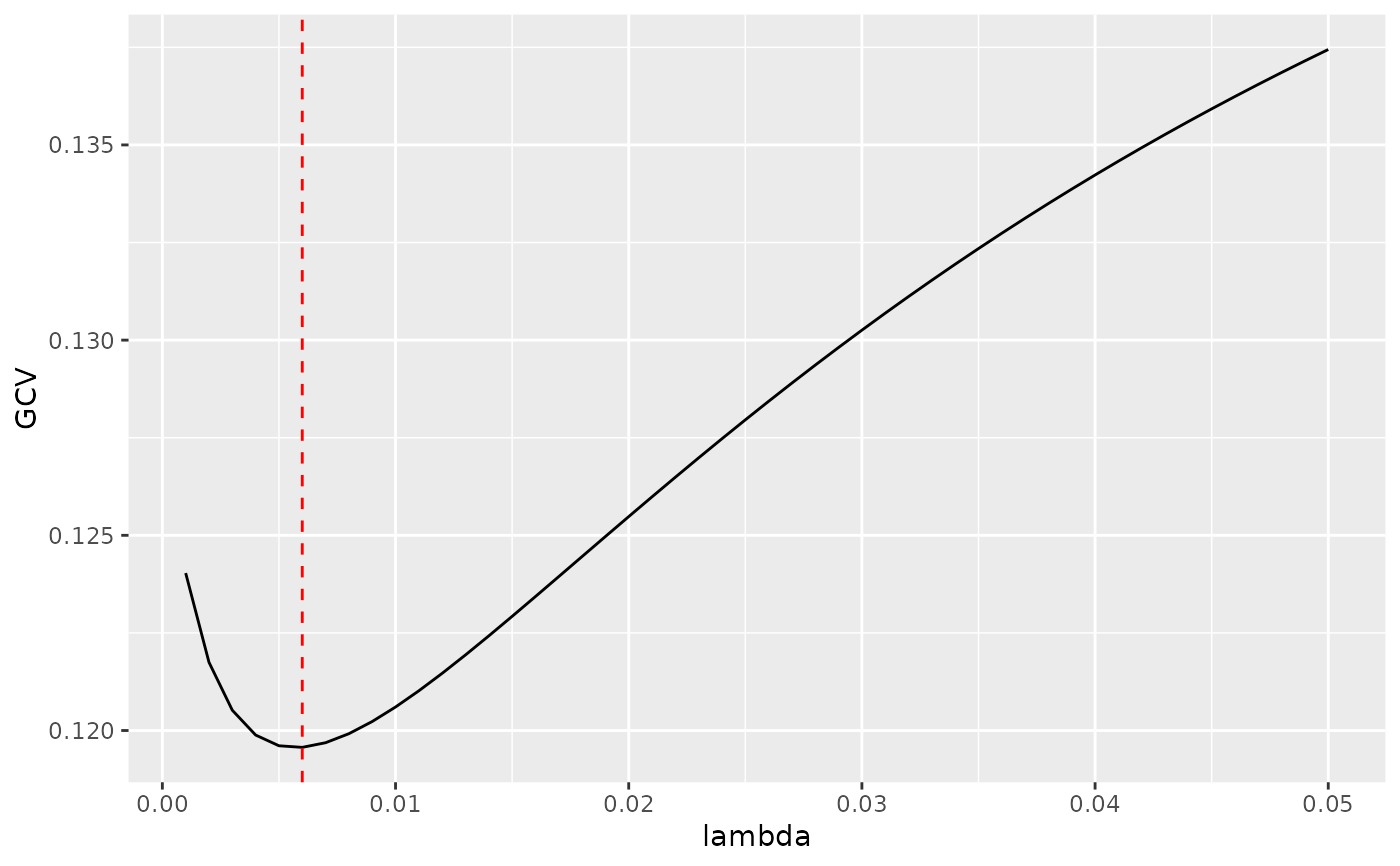Tidy summarizes information about the components of a model. A model component might be a single term in a regression, a single hypothesis, a cluster, or a class. Exactly what tidy considers to be a model component varies across models but is usually self-evident. If a model has several distinct types of components, you will need to specify which components to return.
Usage
# S3 method for class 'ridgelm'
tidy(x, ...)Arguments
- x
A
ridgelmobject returned fromMASS::lm.ridge().- ...
Additional arguments. Not used. Needed to match generic signature only. Cautionary note: Misspelled arguments will be absorbed in
..., where they will be ignored. If the misspelled argument has a default value, the default value will be used. For example, if you passconf.lvel = 0.9, all computation will proceed usingconf.level = 0.95. Two exceptions here are:
See also
Other ridgelm tidiers:
glance.ridgelm()
Value
A tibble::tibble() with columns:
- GCV
Generalized cross validation error estimate.
- lambda
Value of penalty parameter lambda.
- term
The name of the regression term.
- estimate
estimate of scaled coefficient using this lambda
- scale
Scaling factor of estimated coefficient
Examples
# load libraries for models and data
library(MASS)
names(longley)[1] <- "y"
# fit model and summarizd results
fit1 <- lm.ridge(y ~ ., longley)
tidy(fit1)
#> # A tibble: 6 × 5
#> lambda GCV term estimate scale
#> <dbl> <dbl> <chr> <dbl> <dbl>
#> 1 0 0.128 GNP 25.4 96.2
#> 2 0 0.128 Unemployed 3.30 90.5
#> 3 0 0.128 Armed.Forces 0.752 67.4
#> 4 0 0.128 Population -11.7 6.74
#> 5 0 0.128 Year -6.54 4.61
#> 6 0 0.128 Employed 0.786 3.40
fit2 <- lm.ridge(y ~ ., longley, lambda = seq(0.001, .05, .001))
td2 <- tidy(fit2)
g2 <- glance(fit2)
# coefficient plot
library(ggplot2)
ggplot(td2, aes(lambda, estimate, color = term)) +
geom_line()
 # GCV plot
ggplot(td2, aes(lambda, GCV)) +
geom_line()
# GCV plot
ggplot(td2, aes(lambda, GCV)) +
geom_line()
 # add line for the GCV minimizing estimate
ggplot(td2, aes(lambda, GCV)) +
geom_line() +
geom_vline(xintercept = g2$lambdaGCV, col = "red", lty = 2)
# add line for the GCV minimizing estimate
ggplot(td2, aes(lambda, GCV)) +
geom_line() +
geom_vline(xintercept = g2$lambdaGCV, col = "red", lty = 2)

